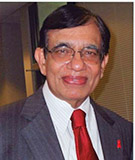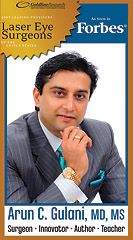
Protect yourself from blood clots during travel

Anisha, only 42, was travelling from Lisbon, Portugal, to Heathrow airport, London, a few months ago. While waiting at the luggage pick up area, she collapsed from a cardiac arrest and unfortunately couldn’t be resuscitated. An autopsy showed that she had massive clots in her lungs, a condition called pulmonary embolism (PE) that were occluding the main artery to the lungs – pulmonary artery. It was a sad ending for a young enterprising business woman.
An Indian cardiologist, James, who was traveling from New York to Mumbai via London was luckier. After attending a convention in the United States, James was returning back to India. As the plane approached London, he felt a little shortness of breath and discomfort in the chest. As soon as the plane landed, he was taken to the closest hospital where they diagnosed him to have the same problem, a bout of PE. Fortunately, he got the necessary medical help at the right time, recovered fully and, got back to Mumbai safely.
Well, these two are real life stories, classical instances where blood clots first developed in the leg veins and broke loose and traveled up into the lungs causing the much feared PE, an acute emergency. How can this happen? Since the venous blood from the legs has to flow into the heart against gravity, some amount of leg muscle activity is needed for the smooth flow. During long trips when you are sitting especially in cramped spaces and your legs are somewhat immobile, the blood flow is slower and can even be stagnant. This is an ideal scenario that favors clotting of the blood in these leg veins commonly known as “deep vein thrombosis” (DVT). These clots can then break loose and travel up into the lungs resulting in the dangerous condition.
You probably remember what happened to our past Vice President Dan Quayle when he travelled from Paris to Indianapolis, some 15 years ago. Immediately after he landed in Indianapolis, he had to be taken to the hospital with the same illness and needed prompt treatment before he got better. A parallel to this scenario happens in our hospitalized patients particularly after surgery when the patients are confined to the bed for the first 24 to 48 hours, a scenario that is conducive for development of leg clots and PE. If not diagnosed and treated right away, PE can be fatal.
Although the main cause for PE is DVT, it can also occur from formation of blood clots in the pelvic veins as happened to tennis player Serena Williams after pregnancy and an emergency C-section. The combination of DVT and PE is generally known as “venous thrombo-embolism” (VTE). The Surgeon General estimates that, “In the U.S. alone, 100,000 to 180,000 deaths occur annually from VTE and, complications from this can place a substantial burden on the U.S. health care system.” The sequelae of VTE include chronic shortness of breath, diminished functional capacity and quality of life.
Long distance air travel is the most often talked about risk factor for VTE and is often featured in the popular press. Fortunately, it is not that common but all the same, travelers have to take necessary precautions. A scientific overview of travel-related VTE found a 2.8-fold higher rate of VTE in travelers than in control subjects and it appears, the longer the travel duration the higher the risk. Those with prior history of VTE have to be even more careful. For long distance and high-risk travelers, American College of Chest Physicians’ guidelines recommend: “Graduated compression stockings, along with common sense measures applicable to all travelers like avoidance of constrictive clothing, ensuring adequate hydration, and undertaking periodic calf muscle contraction by getting up and walking and also moving the feet and legs even while sitting.”
VTE is also a cardiovascular disease and the risk factors that apply to other forms of heart disease are relevant for VTE as well. Many of the risk factors are modifiable. As per American Heart Association, “Encouraging patients to adopt a heart-healthy lifestyle by abstaining from cigarettes, maintaining normal weight, limiting red meat intake, being active, exercising regularly and controlling hypertension might lower the risk of PE and DVT.” The main treatment for VTE is anticoagulation with blood thinners like Warfarin and if you are advised to take the drug long-term, do not stop it unless specifically advised by the prescribing doctor.
M.P. Ravindra Nathan, M.D., is a cardiologist and Emeritus Editor of AAPI Journal. His book “Stories from My Heart” was recently released. (www.amazon.com or www.bn.com).
EYE CARE
LASIK Eye Surgery AND NY Times: OPEN your Eyes: What You Really Need to Know – PART II

LASIK side effects and complications as we mentioned in Part I are possible and though uncommon, need to be addressed successfully.
Having invented Lasik surgical instruments, published Lasik protocols and taught Lasik complication management to eye surgeons worldwide, I have introduced a new super-specialty in Lasik called Laser Corneoplastique™ by which many of the Lasik complications can be corrected back to excellent vision.
Nevertheless, prevention is the way to go! With a worldwide referral of Lasik complication cases over nearly three decades, I have summarized basically four reasons for poor outcomes in Lasik surgery:
1. Misleading advertising by a Lasik practice.
A. A Lasik practice where the surgeons may be new/inexperienced but use the established name recognition of their more experienced, senior partners (who may have actually even retired from the practice).
B. Lasik eye surgery “mills” that advertise the joint number of cases done by chain centers across the nation (i.e. 500,000 cases) while their surgeon may be a novice.
C. Lasik practices using celebrity testimonials (NFL sportsmen/movie stars, etc.). In many such cases, the practice actually pays a hefty sum to be known as official surgeons of such celebrities or professional sports teams and or they most often will do surgery for free to get an endorsement.
2. Lack of patient education and expectations.
-
Patients are not educated about other available vision corrective surgical options since the surgeon may themselves not be capable of performing the full spectrum of surgical options.
-
Patients feel intimidated to ask questions about surgeon qualifications, vision expectations, side effects, etc.
3. Cookie-cutter surgery by a Lasik practice; “One size fits all.”
-
Lasik may be all that the Lasik practice performs. They may be ignorant or incapable of performing the entire range of laser vision surgeries (remember Lasik is just one among these laser techniques)
-
Lack of knowledge, initiative or expertise in offering and performing alternate vision surgery options if Lasik is not ideal for the patient (i.e. new generation ICL surgery for thin cornea patients who are not ideal Lasik candidates).
4. Poor pre-operative technological analysis of the patient’s eye anatomy, vision and stability.
-
Lack of understanding on surgeon’s part regarding interaction between, anatomy, physiology and optics of the eye to get a great vision outcome.
-
Lack of technological finesse to detect early abnormalities and avoid Lasik in improper candidates.
-
Inability to deliver the best outcomes due to lack of modern, cutting-edge technology.
Gulani rules for safety in choosing a Lasik surgeon:
-
Besides visiting the surgeon’s website; do use a search engine (i.e. Google/MSN/Yahoo etc) and type in the doctor’s name and see what comes up. “Do you find only a website and other paid advertising claims? Or do you find interviews, published articles and third-party confirmations of the doctor’s status?”
-
If your surgeon says that they are the first or that they teach other Lasik surgeons, ask for evidence. Are they first in the world, country or state (decreasing order of importance), or just on their street, zip code or town? Do they teach at local dinner meetings that they host or are they invited to teach nationally at prestigious podiums worldwide?
-
Meet with the surgeon, get a feel for the integrity and involvement of the surgeon in educating you and answering every question. Also make sure that your surgeon is contactable and that they do indeed respond when you call.
-
Make sure that your surgeon will see you before surgery, perform your surgery and also see you and be available afterward.
-
Find out if your surgeon performs the full spectrum of laser vision surgery so they can offer what is truly best for you rather than suggesting the only surgery they know how to perform.
-
Do not fall for flashy computer screens and equipment in the office; make sure that you understand all that is going on and insist on asking the surgeon to explain in layman terms.
-
When meeting your surgeon, do ask about possible side effects and complications. Ask if in the rare event that you do end up having a complication, can they handle it? If the answer is yes, then ask for evidence.
Thus, due diligence on part of the patient, experienced selection of individualized surgery by the surgeon and effective use of modern technology can raise
the bar on safety and predictability in Lasik – one of the most successful surgical breakthroughs of modern times.
References:
- Gulani AC, Probst L, Cox I, Veith R. "Wavefront in Lasik": The Zyoptix.
- Platform.. Ophthalmol Clin N Am 17 (2004). 173-181
- Gulani AC. Sharpen your LASIK Technique. Review of Ophthalmology, Vol. 22, no. 2, p. 68-69
- Gulani AC. "A New Classification and Management Guide for Corneal Complications of Lasik ”. Journal Canadien D’ Ophtalmologie 2000; 35 (2). 103-105
- Gulani AC. "New Instrument For Revision LASIK Surgery".
- Journal of Cataract & Refractive Surgery (JCRC), 1998; Vol 24: 595
- Gulani AC. "A New Concept for Laser Refractive Surgery". Ophthalmology Management 2006; 10 (4). 57-63
- Gulani AC. Laser Corneoplastique. Techniques in Ophthalmology 5(1):11-20, 2007
- Gulani AC. Vision Corrective Surgeries: Past Techniques, Present Trends and Future Technologies. North East Florida Medicine. 2007; 2 (58) 41-44
- Gulani AC. “Laser Corneoplastique” Video Journal of Cataract and Refractive Surgery. Vol XXII. Issue 3, 2006
- Gulani AC. "How to put logic into action after Lasik” - Review of Ophthalmology, 2006; XIII (9), 60-64.
- Gulani AC., et al. Innovative Real Time Illumination System for Lasik Surgery. Clin Surg Ophthalmol. 2003; 6:244-246
Arun C. Gulani, M.D., M.S., is director and chief surgeon of Gulani Vision Institute in Jacksonville. He can be reached at [email protected] or visit www.gulanivision.com